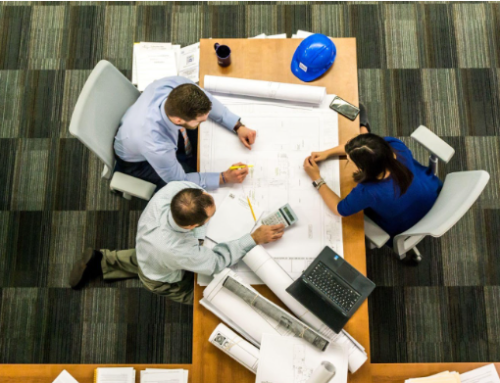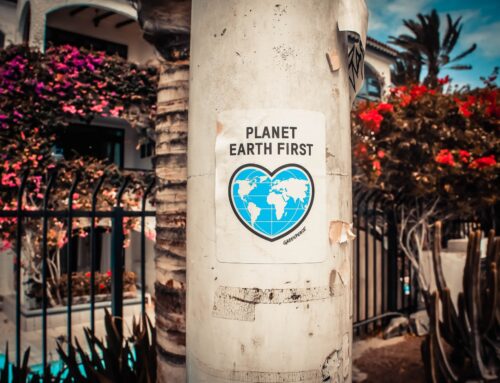There is a distinct possibility that you are either already doing the 3 things listed below, in which case, congrats on being ahead of the curve, or that you’ve had great investment success without them. Either way, there is substantial evidential support for all three of these considerations, and I encourage you to read through them thoroughly before jumping to conclusions. I must also mention that I am not a financial advisor, and the suggestions below are mine and mine alone. Albeit, suggestions that are well supported.
Lets hop right into it.
Great investors trust the data above their intuition
Don’t get caught up in FOMO! (Fear Of Missing Out) It is easy to become captivated by one’s own gut feelings on an opportunity despite objective, knowable and substantiated risks or variables. A charismatic leader, or a novel product can seem like a once-in-a-lifetime chance. Great investors rise above these emotions and dig into the raw data.
There is a great old article in the Wall Street Journal that cites a study where a blindfolded monkey picks better stocks than professional traders. This study has been replicated many times over the years (with and without monkeys) and holds true to this day. Over and over again, indexes and passive strategies outperform stock picks from even the best traders. Yes, it’s true that a few traders can beat the odds, but they are the exception rather than the rule, and those traders will at some point regress back toward the mean.
There’s quick trick to price odds vs. a payout in a given deal (it’s ok to estimate odds, you’ll be closer than you think). Say you have a deal on the table that costs you $1000. You think the deal has a 50% chance of paying out $2000 and 50% chance of paying $0, what is value of that deal? If you multiply the payout of $2000 by the 50% odds, you get $1000. Paying $1000 for a deal that is worth $1000 is a waste of time – play those odds for 50 years and you’ll break even. However, if the same $2000 payout is on the table with the same 50% odds, yet the buy in is only $500; suddenly you’re paying $500 for an opportunity that’s worth $1000. I’d play that game every day, and would subsequently become very wealthy over that same 50 years.
Here’s another thought experiment I’ll offer. Would you bet everything you own against another person’s chances of winning the lottery? Short answer is; you should. Yet many Americans play the reverse odds with their money consistently throughout the year. The average American spends $225 annually on lotteries. If that same money was invested every year at 7% compounded annually for 35 years they would have an additional $33,505 saved for their retirement. (If the wouldbe lottery contributions over the 35 years are adjusted for inflation, the results are even better) This mindset is applied to Americans’ money across many of their collective financial decisions.
Great investors do their research, or trust someone else to do it for them, and they don’t succumb to their intuition. Don’t throw darts at investments. Instead, do the work and sow the seeds that will grow into a money tree. Like Warren Buffett said – “We don’t have to be smarter than the rest, we have to be more disciplined than the rest.”
Great investors focus on long-term passive income over short-term gains
Most great investors skip opportunities like the previous example of spending $500 on a coin-flip that can pay out $2000. It’s risky if you only have $500 to spend. Yet, high risk high reward investments are far from the only options. What if you could invest that $500 in an opportunity at would pay you $50 per year in perpetuity?
I like to think of this in terms of cash-flow vs. growth. If you are relying on a company to grow into new markets or expand from a small start-up into a global leader, the risks mount. You are far more likely to lose your money than pick a winner out of the myriad start-up ideas available. If instead, you use that $500 to buy a dividend stock, a bond, a CD, or loan in out on a peer to peer lending platform, that money is now working for you, rather than the reverse. Looking beyond others managing your investment, an industrious investor can look to own real estate that has a cash-flowing asset on it. A duplex, a small storage facility, or a property that has a wind turbine or solar panels on it.
I know that $500 is not enough to buy a property, but it could be enough to buy a few adornments for a spare bedroom and rent it out on Airbnb. If you don’t own your home, you could use it as a down payment on a used car that you can rent out on Turo. Or maybe pool that $500 with a few friends and family to get into something bigger.
The point is, focus on asking your money do the work, while you do other things. I must also mention, that this strategy is particularly savvy during a time of over inflated equity markets. Now there are great counterarguments to the above logic, so I suggest you seek out a few before you run off and ignore growth opportunities all together.
Great investors, more and more, are pricing in ESG considerations
E S and G. Environmental, Social, and Governance. The wave of focus and strength of this forward looking investment strategy can not be overstated. Traditional investment factors will likely pale in comparison when the authors of history look back at our time.
E. We must face the fact that climate change is going to cost the US economy trillions of dollars in the coming decades and global economies 10s of trillions. We must also accept that human activity is causing it. (Alos, read this, and keep in mind that stopping 1.5º of warming isn’t gonna happen) This is an undeniable truth, and anyone still on the fence can drop onto the side of reason now…Ok have you come on over yet? No!…Ok – Sorry, I can’t help you…La la la, nothing to see here.
This reality will be painful and will be disproportionately felt by the most vulnerable among us. The lowest economic rung of the US economy will suffer vastly more than the middle class and another order of magnitude more than the wealthy. Now take that level of hardship for the poorest Americans and multiply it by 10 for struggling peoples in emerging economies, and again by 10 for frontier economies. Now this math is for making a point, and I haven’t deeply researched the exact disperate distributions of suffering, but you get the point.
So what does this have to do with investing? Everything.
Imagine that you are looking at buying a stock that seems cheap, but a trusted and knowledgeable friend, mentions that a new technology just came into the fray which will render the company you were about to buy completely obsolete. Would you buy that stock? Imagine you’re thinking of buying an investment property and another trusted and knowledgeable friend mentions that an insurance company is soon going to stop insuring property in that area because of fire risk, or because of flooding. Would you buy that property?
Further, imagine that you want to invest in anything that could be affected by: energy shifts from fossil fuels, technological shifts to reduce carbon, farming practices in the face of famine, massive human migration due to sea level rise and widening uninhabitable regions from drought, collapsing global ecosystems i.e. fisheries from ocean acidification, tree harvesting failures from fire and encroachment, eco tourism failures from lower free flow of cash in the middle class and shrinking natural environments, collapsing social structures and governments in frontier economies leading to wars, and on and on.
Now, replace that “trusted and knowledgeable friend” with an entire global community of dedicated scientific professionals who have labored for decades to provide us with data on climate. Don’t believe me (also, don’t trust anyone who says “believe me” as an argument for anything) believe the closest possible summation of objective reality laid out by this global community.
As dire as this all sounds, the above list of climate risks is not even scratching the surface. I’ll grant that this will be a slow creep, and the sky is not falling today. But, any investor not considering this trajectory is missing the single biggest risk of the 21st century.
S. and G. The environmental risks are obviously the most dramatic, but this is not to discount the importance of the S and G. Magni Global’s research shows that the “G” is the single most effective tool for creating change in the “E” and “S” categories. If stake and stockholders hold corporate leadership accountable, than the dial will move in the correct direction.
The S factors most directly impact people, and can feel great to incorporate into a strategy, not to mention make real differences in lives. I will not speak much on either of these, as it’s not an area of great expertise. That said, S and G are risks that must be priced into a portfolio, for anyone looking further into the future than the latest social media update. (wow, I sound old for 33)
Look, let’s focus on the positives. You can make a difference while you earn money for your future. The doom and gloom is unfortunately real, but is not completely hopeless. Investors must do all they can to keep the global economic engine running, while simultaneously moderating their strategies and expectations to meet the reality. If the engine stops running, there is no way to pay for all these trillions. I’m getting ready to do my part and so should you. Vote with you dollars, vote with you actions and vote at the ballot.
Good luck.






